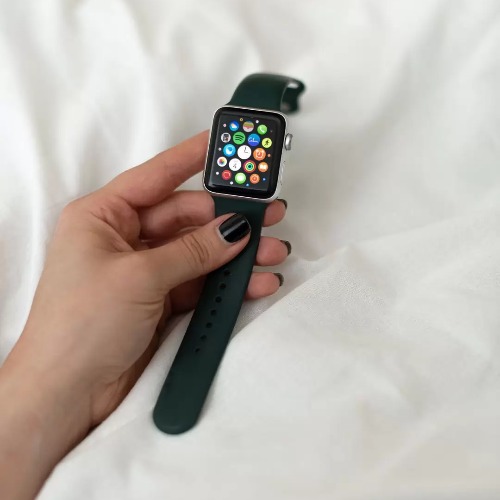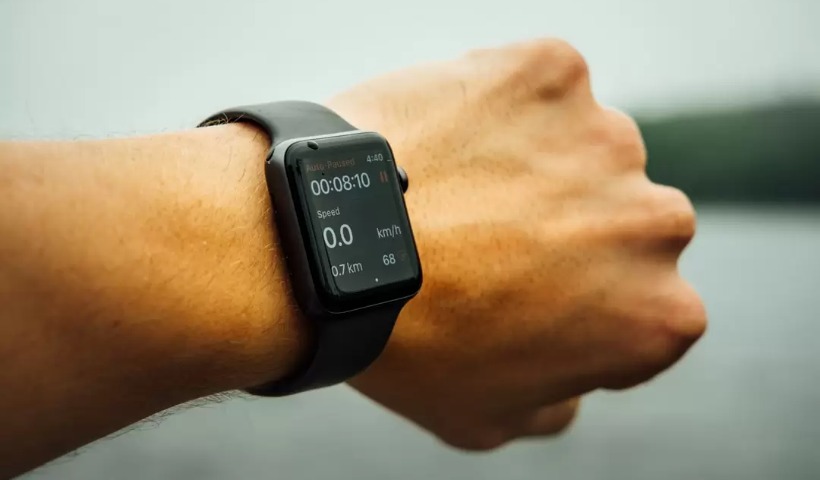Wearable devices such as smart watches which continuously detect your heart rate, body temperature and other physiological marks can detect Covid-19 days before the patient is diagnosed.
As the most common symptoms of Covid-19 include fever ,cough, difficulty in breathing, etc. which are the physical changes so the smart watches can detect these symptoms.
Devices like Apple Watch, Fitbit and Garmin can detect whether an individual is Covid-19 positive even before the patient can start feeling any symptoms or the virus could be detected by the Covid-19 tests.
According to studies from leading medical and academic institutions, including Mount Sinai Health System in New York and Stanford University in California.
Experts say that the wearable technology could bring a lot of benefit and play a vital role in stemming this pandemic and other communicable diseases.
Post Contents
Importance
Tests for the detection of COVID-19 are typically time consuming, costly and require professional expertise.
Improving the frequency, ease and ubiquity of testing for COVID-19 is urgent, particularly when a substantial proportion of patients (40–45%) may be pre-symptomatic or asymptomatic.
Obtaining longitudinal physiological data via commonplace wearable devices, typically worn on the wrist, may offer a convenient means of detection.
Self-reported symptoms can be used to construct relatively simple models for the identification of COVID-19.
Data from wearables may similarly be used to identify viral respiratory illnesses.

Subtel heartbeat changes
Researchers at Mount Sinai found that the Apple Watch can detect subtle changes in an individual’s heartbeat.
Which signals that an individual has the coronavirus, up to seven days before they feel sick or infection is detected through testing.
The study analyzed a metric called heart rate variability also known as the variation in time between each heartbeat
Which is also a measure of how well a person’s immune system is working.
In contrast with Covid-19 negative Covid-19 positive individuals are experiencing lower heart rate variability or in other words little variations between heart beats.
High heart rate variability does not reflect an elevated heart rate: It indicates that an individual’s nervous system is active, adaptable and more resilient to stress.
Robert Hirten
“Our goal was to use tools to identify infections at time of infection or before people knew they were sick,” said Rob Hirten.
He is assistant professor of medicine at the Icahn School of Medicine at Mount Sinai in New York City and author of the Warrior Watch study.

Robert Hirten told CBS MoneyWatch “We already knew that heart rate variability markers change as inflammation develops in the body, and Covid is an incredibly inflammatory event.”
He also said “It allows us to predict that people are infected before they know it.”
Investigators followed nearly 300 Mount Sinai health care workers who wore Apple Watches between April 29 and September 29.
“Right now, we rely on people saying they’re sick and not feeling well, but wearing an Apple Watch doesn’t require any active user input and can identify people who might be asymptomatic. It’s a way to better control infectious diseases,” Hirten said.
Given that more than half of coronavirus cases are spread by asymptomatic carriers. The data collected by smartwatches could be instrumental in helping tame the virus.
According to a Centers for Disease Control and Prevention model published last week. Many people are using wearable devices
People using Wearable devices
Between March–June 2020, Quer and co-authors conducted the DETECT study, in which 30,529 participants in the United States provided data from their smartwatches and activity trackers.
(78.4% of the participants used Fitbit devices, 31.2% used the Apple Watch, and 8.1% used devices compatible with Google Fit. Some participants used more than one platform).
Some of the participants also self-reported symptoms (3,811 participants, or 12.4% of the total).
The results of diagnostic tests (333 participants, or 8.7%; 54 participants, or 16.2%, reported a positive test result).
Participants wore a variety of different activity trackers from Garmin, Fitbit, Apple and other makers, found that 81% of coronavirus-positive participants experienced changes in their resting heart rates up to nine and a half days prior to the onset of symptoms. According to a study from Stanford.
An extremely elevated heart rate was indicative of symptom onset, the study reported.
For those with test results, the authors analysed their daily average resting heart rate (RHR; in beats per minute). daily sleep duration (in minutes) and daily activity (step count) according to two interval.
A baseline window of 7–21 days before the onset of symptoms, and a ‘test interval’ spanning 7 days from symptom onset.
For each participant and data type, the authors calculated the differences between the maximum values (for RHR) or mean values (for sleep and activity data) in the test interval and the median of the values in the baseline window.
Early Symptoms
Researchers used smartwatch data to identify nearly two-thirds of COVID-19 cases four to seven days before people showed symptoms, according to the study, published in Nature Biomedical Engineering in November. The study examined data from 32 people who tested positive for the virus from a pool of more than 5,000 participants.
The team also has created an alarm system that alerts wearers that their heart rate has been elevated for a sustained period of time.
“Regular fluctuations won’t trigger the alarm — only significant, sustained changes will.”
“It’s a big deal because it’s alerting people not to go out and meet people,”said Professor Michael Snyder.
He’s a Professor in Stanford Universities.

When Snyder’s alarm recently went off, for instance, he cancelled an in-person meeting in case he might be infectious.
We set the alarm with a certain sensitivity so it will go off every two months or so,” said Stanford University Professor Michael Snyder, who led the study.
